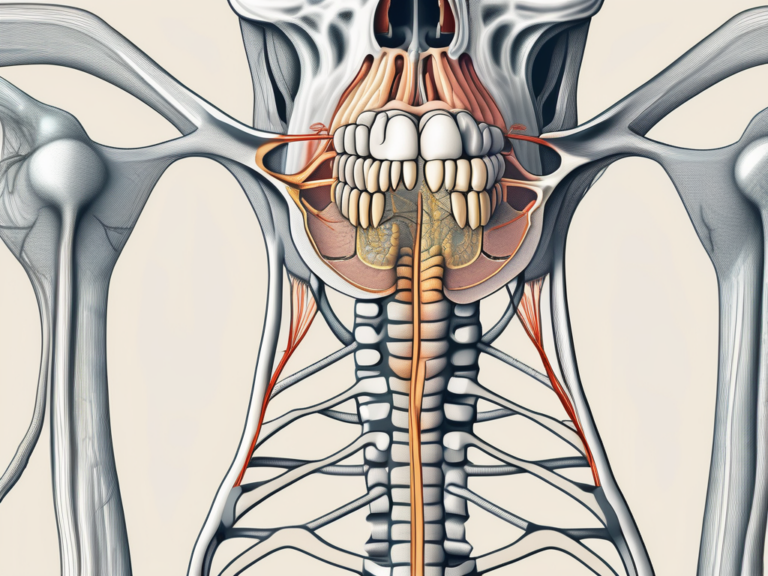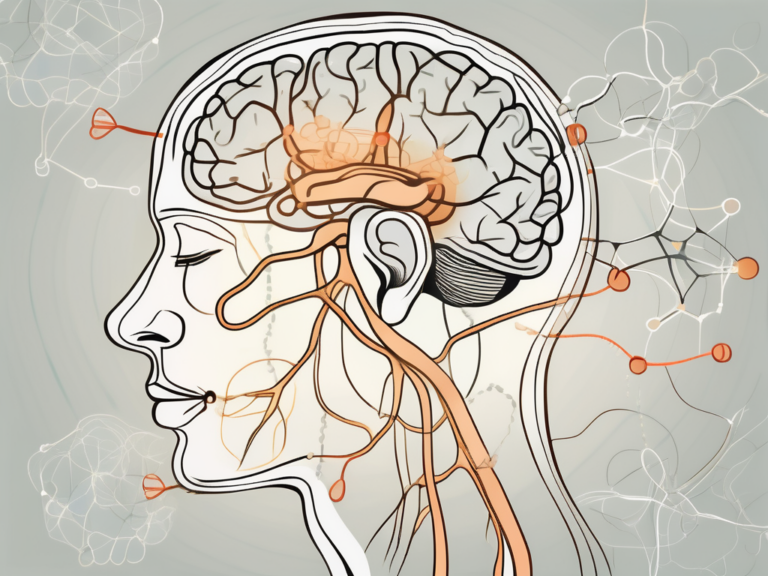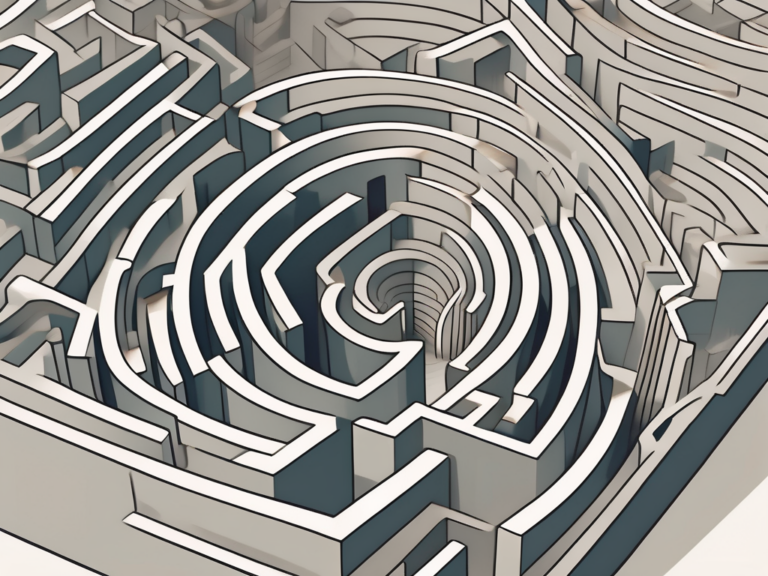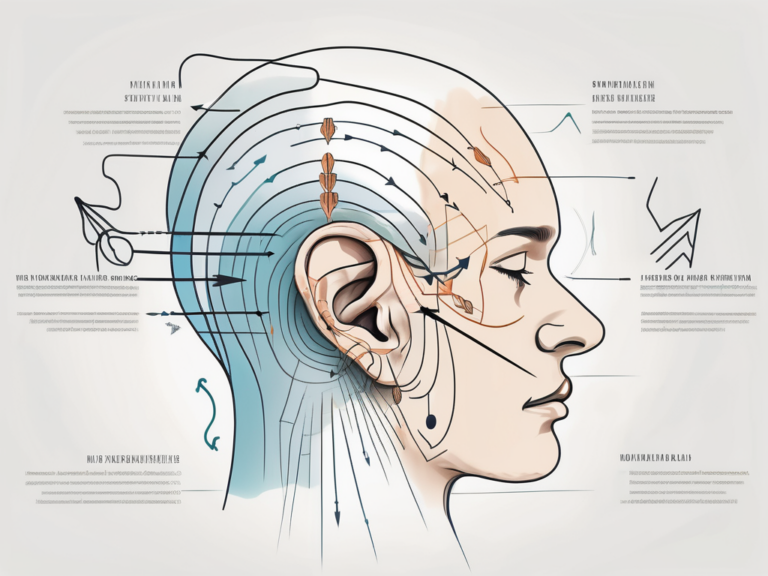Exploring the Role of Parasympathetic Nerves in the Body
The parasympathetic nervous system plays a crucial role in maintaining balance and harmony within the human body. Understanding the intricate workings of this system is key to understanding overall bodily function and health. In this article, we will delve into the fascinating world of parasympathetic nerves and explore their structure, function, impact on bodily processes, and potential therapeutic applications.
Understanding the Nervous System
The nervous system is a complex network of cells, tissues, and organs that coordinates and regulates the body’s activities. It is divided into two main divisions: the central nervous system (CNS) and the peripheral nervous system (PNS). The PNS is further classified into the somatic nervous system and the autonomic nervous system (ANS).
The Structure of the Nervous System
The nervous system consists of billions of neurons, the fundamental units of the nervous system. Neurons are interconnected to form a vast network, allowing rapid communication and transmission of electrical signals. The main components of a neuron are the cell body, dendrites, and an axon. The axon carries electrical impulses away from the cell body to other neurons or target cells.
Imagine the nervous system as a bustling city, with neurons as the busy inhabitants. Each neuron has its own unique role to play, like the citizens of a city who contribute to its overall functioning. The cell body can be seen as the command center, where decisions are made and signals are generated. Dendrites, like the city’s intricate road network, receive incoming signals from neighboring neurons, while the axon acts as the city’s highways, swiftly carrying signals to their intended destinations.
The ANS, a vital component of the PNS, controls involuntary bodily functions and is further divided into the sympathetic and parasympathetic branches. While the sympathetic nervous system prepares the body for “fight or flight” responses, the parasympathetic nervous system promotes “rest and digest” processes, regulating bodily functions during periods of relaxation and recovery.
The Function of the Nervous System
The nervous system coordinates and controls various bodily functions, including sensory perception, motor control, cognition, and the regulation of internal environments. It serves as the body’s communication network, ensuring efficient transmission of signals between different parts of the body.
Think of the nervous system as a master conductor, orchestrating the symphony of our body’s functions. Just like a conductor guides the musicians to produce harmonious melodies, the nervous system directs the different systems of the body to work together seamlessly. It ensures that our senses are sharp, our movements are coordinated, and our thoughts are processed with lightning speed.
Furthermore, the nervous system is responsible for maintaining homeostasis, the delicate balance of internal conditions necessary for our survival. It monitors and regulates vital processes such as body temperature, heart rate, blood pressure, and hormone levels. Like a vigilant guardian, it keeps a watchful eye on our internal environment, making adjustments as needed to keep everything in optimal working order.
The Parasympathetic Nervous System: An Overview
The parasympathetic nervous system is a crucial branch of the autonomic nervous system that counterbalances the effects of the sympathetic nervous system. It promotes restorative processes, conserves energy, and facilitates digestion and other essential bodily functions during periods of calm and relaxation.
The Anatomy of the Parasympathetic Nervous System
The parasympathetic nervous system originates from cranial nerves and sacral spinal nerves. Cranial nerves, such as the vagus nerve (cranial nerve X), play a vital role in regulating parasympathetic functions in the head and neck region. The sacral spinal nerves control parasympathetic processes in the pelvic organs.
Within the cranial nerves, the vagus nerve is particularly fascinating. It is the longest cranial nerve in the body, extending from the brainstem all the way down to the abdomen. This extensive reach allows the vagus nerve to influence a wide range of parasympathetic functions, including heart rate regulation, digestion, and even emotional responses. It acts as a communication superhighway, transmitting signals between the brain and various organs, ensuring their coordinated functioning.
The main neurotransmitter involved in the parasympathetic nervous system is acetylcholine. Acetylcholine acts on specific receptors in target cells, transmitting signals and eliciting various responses throughout the body. These receptors, known as cholinergic receptors, are found in abundance in organs innervated by the parasympathetic nervous system, such as the heart, lungs, and digestive system.
The Physiology of the Parasympathetic Nervous System
When the parasympathetic nervous system is activated, it triggers a cascade of physiological responses that promote relaxation, digestion, and restoration of energy. One of its primary effects is a slowing down of heart rate, reducing blood pressure and promoting optimal cardiac function.
But did you know that the parasympathetic nervous system goes beyond just regulating heart rate? It also plays a crucial role in promoting respiratory function. When activated, it causes bronchoconstriction, which narrows the airways, allowing for more efficient oxygen exchange in the lungs. This mechanism ensures that the body receives an adequate supply of oxygen, even during periods of rest and relaxation.
The parasympathetic nervous system also stimulates glandular secretions, such as salivation and lacrimation, aiding in the digestion and lubrication of the digestive and visual systems, respectively. Additionally, it promotes increased blood flow to the gastrointestinal tract, optimizing nutrient absorption and digestion. This increased blood flow not only enhances digestion but also helps in the elimination of waste products, ensuring the overall health of the digestive system.
The Role of Parasympathetic Nerves in Bodily Functions
Parasympathetic nerves have a profound impact on various bodily functions, ensuring their proper regulation and maintenance. Let’s explore the role of the parasympathetic nervous system in some key physiological processes:
The parasympathetic nervous system is often referred to as the “rest and digest” system, in contrast to the sympathetic nervous system’s “fight or flight” response. It plays a crucial role in promoting relaxation, conserving energy, and maintaining homeostasis in the body. By activating parasympathetic pathways, the body can focus on activities such as digestion, elimination, and repair.
Parasympathetic Nerves and the Heart
The parasympathetic nervous system exerts inhibitory control over the heart, reducing heart rate and ensuring the heart functions at a steady pace. This enables efficient blood circulation, ensures optimal oxygenation, and prevents the heart from working too hard.
Furthermore, parasympathetic stimulation of the heart via the vagus nerve can lead to a decrease in the force of cardiac contractions, which is beneficial during periods of rest and relaxation. This modulation of heart rate and contractility by the parasympathetic system helps maintain cardiovascular health and prevents issues such as arrhythmias.
… … … … … … …
Future Research Directions in Parasympathetic Nervous System
Understanding the role of the parasympathetic nervous system is an ongoing area of research with promising future prospects. Scientists are exploring potential therapeutic applications and investigating the challenges and opportunities in leveraging the parasympathetic nervous system for improving health.
The parasympathetic nervous system, often referred to as the “rest and digest” system, plays a crucial role in regulating involuntary bodily functions such as heart rate, digestion, and glandular secretion. This branch of the autonomic nervous system works in opposition to the sympathetic nervous system, which is responsible for the body’s “fight or flight” response. By delving deeper into the intricate mechanisms of the parasympathetic nervous system, researchers aim to uncover novel insights that could revolutionize medical treatments and enhance overall well-being.
Potential Therapeutic Applications
The knowledge gained about the parasympathetic nervous system could lead to the development of innovative therapeutic approaches for various conditions. Targeting parasympathetic pathways may hold potential in treating disorders such as anxiety, depression, gastrointestinal disorders, and cardiovascular diseases.
Furthermore, the exploration of novel therapeutic modalities, such as biofeedback techniques and vagus nerve stimulation, showcases the diverse range of possibilities in harnessing the parasympathetic nervous system for clinical applications. These cutting-edge approaches have the potential to offer personalized and effective treatments that address the underlying physiological imbalances associated with various health conditions.
Challenges and Opportunities in Parasympathetic Nervous System Research
Despite the research advancements made in understanding the parasympathetic nervous system, many questions and challenges remain. Researchers face the challenge of unraveling the complexity of neural networks and their intricate interactions. Overcoming these obstacles will provide opportunities for deeper understanding and potential breakthroughs in therapeutic interventions.
Moreover, the translation of basic research findings into clinical practice poses a significant hurdle in the field of parasympathetic nervous system research. Bridging the gap between theoretical knowledge and practical applications requires interdisciplinary collaboration and innovative methodologies. By addressing these challenges head-on, researchers can pave the way for transformative advancements in healthcare that prioritize holistic approaches to wellness.
Conclusion
In conclusion, the parasympathetic nervous system plays a pivotal role in maintaining homeostasis and optimizing bodily functions during rest and relaxation. Its intricate network of nerves and neurotransmitters ensures the efficient regulation of numerous physiological processes, including heart rate, digestion, and respiratory function. As research continues to unravel the complexities of this essential system, the potential for therapeutic applications and improved health outcomes becomes ever more promising.






